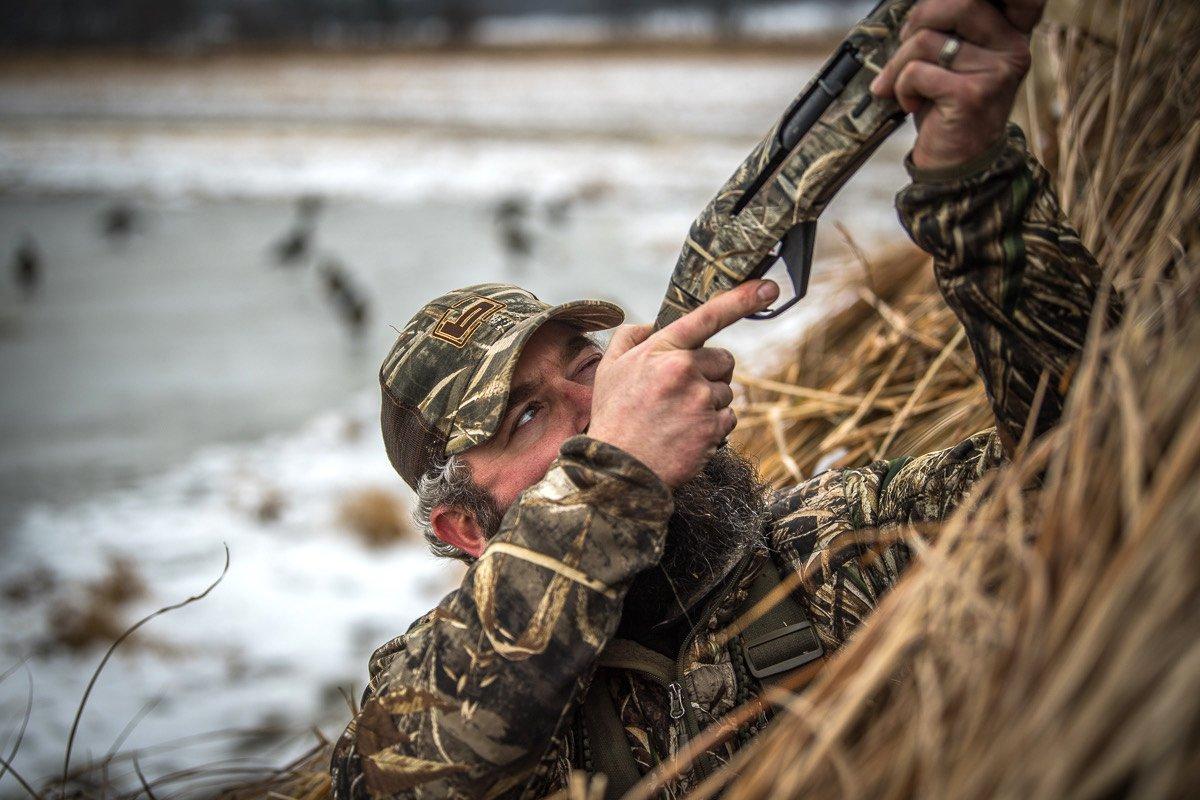When you whiff, don't pretend it didn't happen — figure out why and do better next time
Veteran duck hunters know the drill after whiffing on a bird: Stand as if stunned, mouth agape, and shake your head, as if it's never happened before.
It's a good way to save face. However, with honest introspection, we typically know that our form or swing was off. Now and then, though, some misses befuddle us. Maybe your lead and sight picture looked good, and you were honestly shocked when the bird flew away unharmed. It happens. Here are some reasons why and thoughts on how to fix the cause.
Hurrying
Some guys are excellent snap shots. I am not, and I'm not alone. Sometimes — especially when hunting with a group of eager buddies — it's easy to rush the shot, which often results in shooting behind a bird or not shouldering your gun correctly.
I'm not advocating taking a slow, measured approach to mounting your gun and swinging on the target. After all, ducks are lightning fast, and quickness counts with most opportunities. Still, you'll typically shoot better if you avoid panic, ignore other shooters, mount your gun confidently and steadily, and then concentrate on the target and your swing before firing.
Measuring Birds
This is an easy sin to commit, especially when using the sustained-lead method of shooting or with ducks that float across your spread somewhat lazily. Basically, you point your bead ahead of the target but stop or slow your swing enough that your pattern flies behind the bird.
Easy fix: Be aggressive with every target, including birds that don't appear to be flying that fast. Focus your eyes intently on the duck, swing through the bird and let your natural hand-eye coordination say when to fire. And try to focus on good follow-through, keeping your barrel moving during and after the shot.
Getting Lazy on Incomers
Ducks that decoy head-on provide seemingly easy opportunities. Yet why do we miss so many of those cake shots? We get lazy, just like when we measure crossing shots. Instead of treating that target like any other bird, we revert to the horrible advice of shooting at their feet or the water below them. Don't do that. Focus on easy incomers as you would Mach III crossers. Bore holes in that bird with your eyes, keep your gun moving, and follow through after the shot. Also, avoid the temptation to lift your cheek off the stock as you marvel at how well that duck decoyed.
Covering Up Birds
I fall back into this bad habit sometimes with straightaway targets, and it pretty much guarantees a miss. Basically, whether I'm in a hurry or I've shouldered my gun poorly, I cover the bird with the barrel and shoot. That means I block the bird from my sight, which generally means I'll slow or stop my gun. Also, it leads to shooting over birds, as most shotguns place more pellets in the top half of the pattern than the bottom.
Bottom line: Never cover up a bird when wingshooting. Always focus your eyes intently on the target and watch it during every facet of the shot, including your gun mount, swing, trigger pull and follow-through. If you do this correctly, you'll see the target fold as your shotgun continues to swing past the bird. When you cover up a duck, you'll likely watch it fly off.
Click here for more Realtree waterfowl hunting content. And check us out on Facebook.







